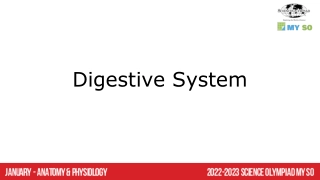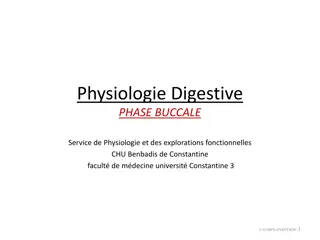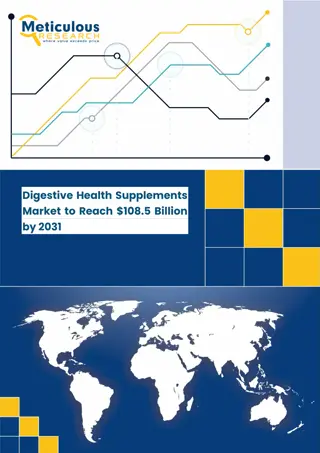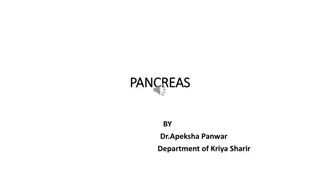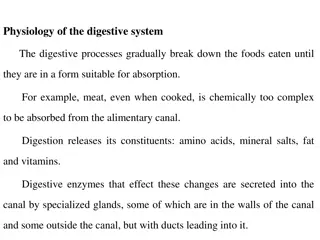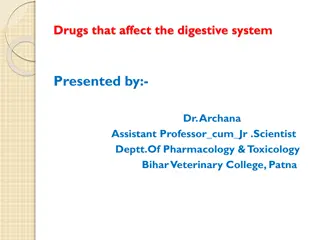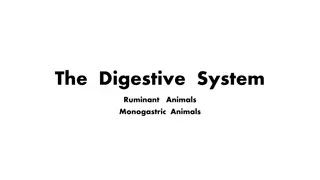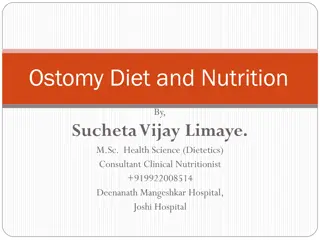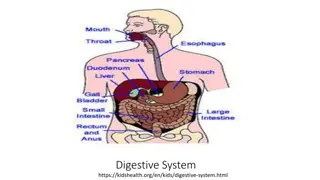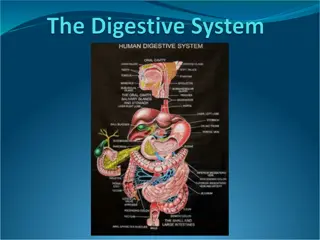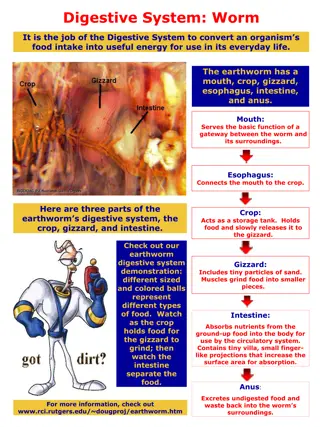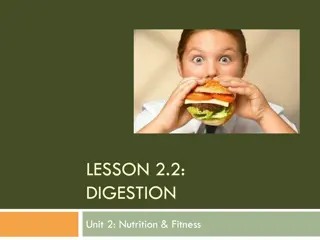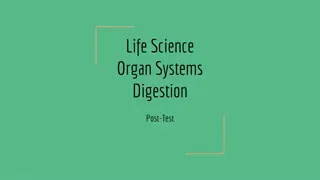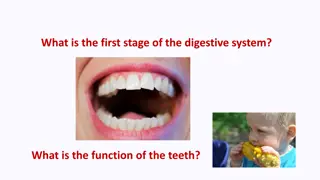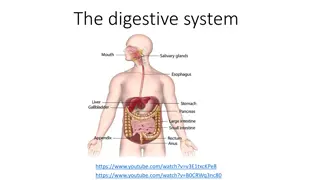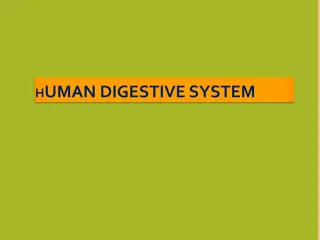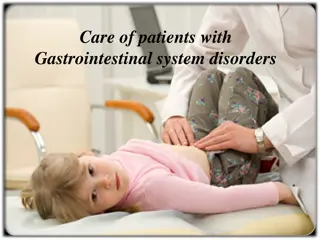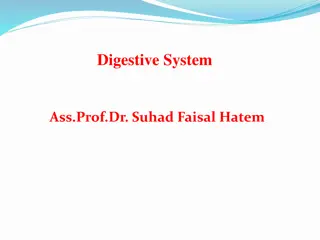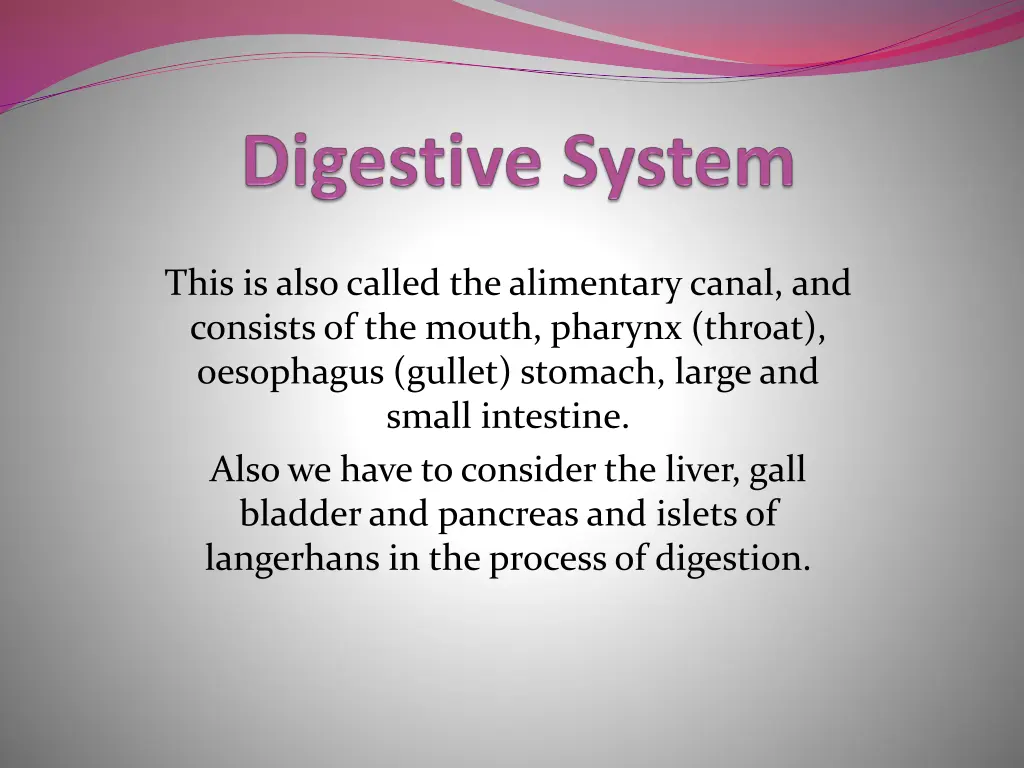
Understanding the Digestive System and Process
Explore the intricate workings of the digestive system, from the mouth to the small intestine, where food is broken down and nutrients are absorbed. Enzymes, muscles, and organs work together in this vital process of digestion for energy and renewal. Discover how the mouth, pharynx, oesophagus, stomach, and small intestine play crucial roles in converting food into usable elements for the body while eliminating waste efficiently.
Download Presentation

Please find below an Image/Link to download the presentation.
The content on the website is provided AS IS for your information and personal use only. It may not be sold, licensed, or shared on other websites without obtaining consent from the author. If you encounter any issues during the download, it is possible that the publisher has removed the file from their server.
You are allowed to download the files provided on this website for personal or commercial use, subject to the condition that they are used lawfully. All files are the property of their respective owners.
The content on the website is provided AS IS for your information and personal use only. It may not be sold, licensed, or shared on other websites without obtaining consent from the author.
E N D
Presentation Transcript
This is also called the alimentary canal, and consists of the mouth, pharynx (throat), oesophagus (gullet) stomach, large and small intestine. Also we have to consider the liver, gall bladder and pancreas and islets of langerhans in the process of digestion.
Digestion Digestion is the process of breaking down our food Specific enzymes act on the starch sugar protein carbohydrates and fats The body then uses the broken down elements for energy repair and renewal Any waste is then eliminated
The takeaway.... http://t2.gstatic.com/images?q=tbn:ekd-DSCUWiB__M:
The mouth Mastication is the first process of digestion Teeth tongue and palate are involved in the mechanical process The taste buds allow for differentiation of salt sour and sweet The salivary glands secrete an enzyme called amylase to break down starchy foods Food is then swallowed and passes into the pharynx
The pharynx and oesophagus The pharynx moves food into the oesophagus by muscle contractions called peristalsis The opening into the stomach is a ring of muscle called the cardiac sphincter, opening and closing, preventing the stomach acids from flowing back up
Stomach The stomach is J shaped and lies under the liver and diaphragm Food stays in the stomach for a few hours to digest Muscular contractions churns the food, whilst the gastric juice (an acid), made up of pepsin, lipase and hydrochloric acid breaks the proteins down The food then passes through the pyloric sphincter into the small intestine
Small intestine... is 6metres long The small intestine is made up of three parts Duodenum Jejunum Ileum Here digestion of the carbohydrates into glucose and protein into amino acids occur by enzymes In the small intestine pancreatic juices, insulin and bile aid in breaking down fat Villi small projections that are part of the intestine wall, these increase the surface area of the intestine helping absorption
Large intestine...is 1.5 metres long The small intestine opens into the large intestine which consists of seven sections Acending colon Transverse colon Caecum Descending colon Sigmoid colon Rectum Anal canal Reabsorbs water and maintains the fluid balance of the body Absorbs certain vitamins Stores waste before it is eliminated.
Pancreas, liver and gallbladder The pancreas is a gland that contains the islets of langerhans and secretes Lipase changes lipids to fatty acid to glycerol Trypsin proteins to polypeptides Amylase starch to maltose and dextrin The islets of langerhans produce insulin along with other hormones The liver produces bile to emulsify fat The gall bladder stores bile made by the liver, it is then used to aid the digestion of fat
The role of insulin in digestion Insulin is a hormone that is produced in specialized cells in the islets of Langerhans, a part of the pancreas. The main role of insulin is to regulate the body's use of sugars and other nutrients. The process is initiated during and immediately after the process of digestion and breaks down carbohydrates into sugar molecules (including glucose) and proteins into amino acids.

